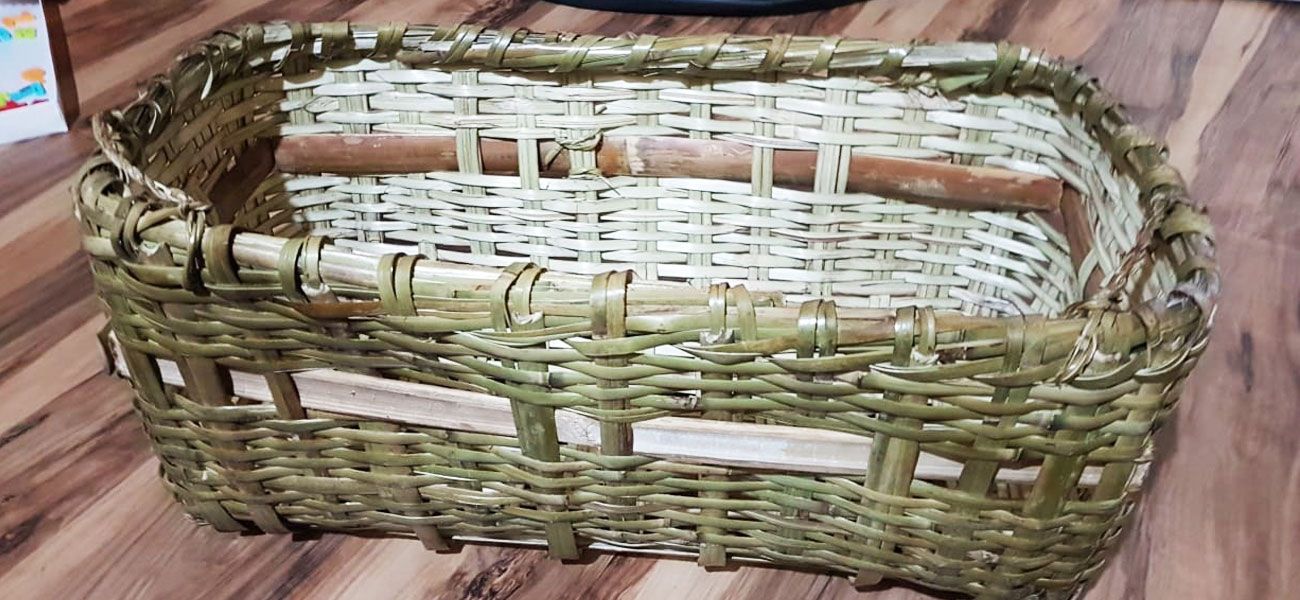Khambu Rai “Chula”: Spiritual Bio Geometry
Samkhalung, also called Suptulung, refers to the hearthstones of the Khambu Rai tribe. Colloquially referred “Chula Dhunga”, Samkhalung is an integral part of Rai traditions. At the risk of oversimplifying cultural practices, we can say that Khambu Rai worship traditions involve a set of beliefs that can be classified into two parts – nature worship in the form of Divine Spirits and Ancestor Worship. Departed ancestors are assumed to wield great authority, having special powers to influence the course of events or to control the well-being of their living relatives. While the nature spirits look after the forests, water sources, crops, and harmony among all sentient beings, deceased ancestors serve as mediators by providing access to spiritual guidance and power.
For the Khambu Rai tribe, Samkhalung is the house altar, the sanctum sanctorum through which Ancestral spiritual energies can be accessed, invoked, and communicated. Samkhalung becomes the medium that connects the physical world to the spiritual realm. The word “Samkha” means ancestors and “Lung” means stones. The hearth is both a shrine and the kitchen – an altar that is also used for regular cooking. Of course in the modern age, the advent of gas and induction stoves has rendered the Hearth into only a place of worship, but in the old days, the family would sit by the hearth, cook their food and have dinner every night. Traditions dictate that whenever an elder passed away, he would be remembered by the living members; sitting by the hearth. His spiritual energies would be experienced by the living members of the family.
The Hearthstones collectively, at the center of all Khambu worship systems, is not only a celebration of the living culture of their traditions, but it represents the belief that the Samkhalung is the source of all spiritual energy, strength, abundance, and health. This is so because of the presence of a remarkable bio-geometry in the structure of the Samkhalung. Different sub-tribes of the Khambu Rais have different nomenclatures for the three Samkhalung stones, but to simplify it, let us call the three stones, (1) Papalung: symbolizing male ancestors, (2) Mamalung: symbolizing female ancestors, and (3) Ramilung: symbolizing societal spiritual energies.

Outside the 3 stones (lungs), a 360 degree perimeter is created by placing 4 flat stones in all directions. These stones are placed such that each stone creates a further 90 degree angle. A flat stone is placed at the bottom of the three main lungs. This stone remains invisible since it is placed underground. The Stones of the Samkhalung/Hearth provide a geometrical axiom that gives it balance and equilibrium to harness spiritual energies. The outer perimeter is known as the Saanglaakhepbu while the flat stone underneath is known as Thechelung. Thechelung remains warm even after the fire is extinguished thereby keeping the hearth and the home warm. The energies produced during the Pitri worship remains intact because Thechelung remains warm and still, long after the ritual ends.
The combination of the element of Fire and the Geometrical Shape of the Stones is both creative and destructive, its qualities are brightness, thinness and motion and its mode is active. It is fire that Khambu Rai ancestors used to warm their homes and used to cook food, sit around it to ward off the darkness of night. During the ritual of Pitri worship/Mang Sewa, the fire becomes a witness to the Oral Voyage (Mundhum) one takes to protect life from the adversity of negative entities that could emerge. It is believed that during the ritual the spiritual realm is opened and the house forms a systematic medium inhabited by the living, to now be made ready for the ancestors to arrive. It is altered into a space into which the ancestors are fleetingly transported but also where negative entities wandering about the village may penetrate but thanks to Ramilung, they cannot enter the house.

Within the realm of the divine connection between man and his ancestors, the man seeks to identify and demarcate a space for himself and his family members. It is at this moment that the ideal borders of the village do not exist, nor even the walls of the house provide protection any longer. Only the four stones sides forming the outer perimeter of the sanctum/hearth can now be a place of refuge, in a world that has become entirely a vacant space; belonging to everyone and no one.
Also known as Bio geometry (the geometry of shapes), the shape of a Khambu Samkhalung helps unlock the energies of the spiritual realm. The Khambus believe that the Hearth Stones are the medium between the spirit world and the human world; the foundation of the all creation- in life and in death.





















